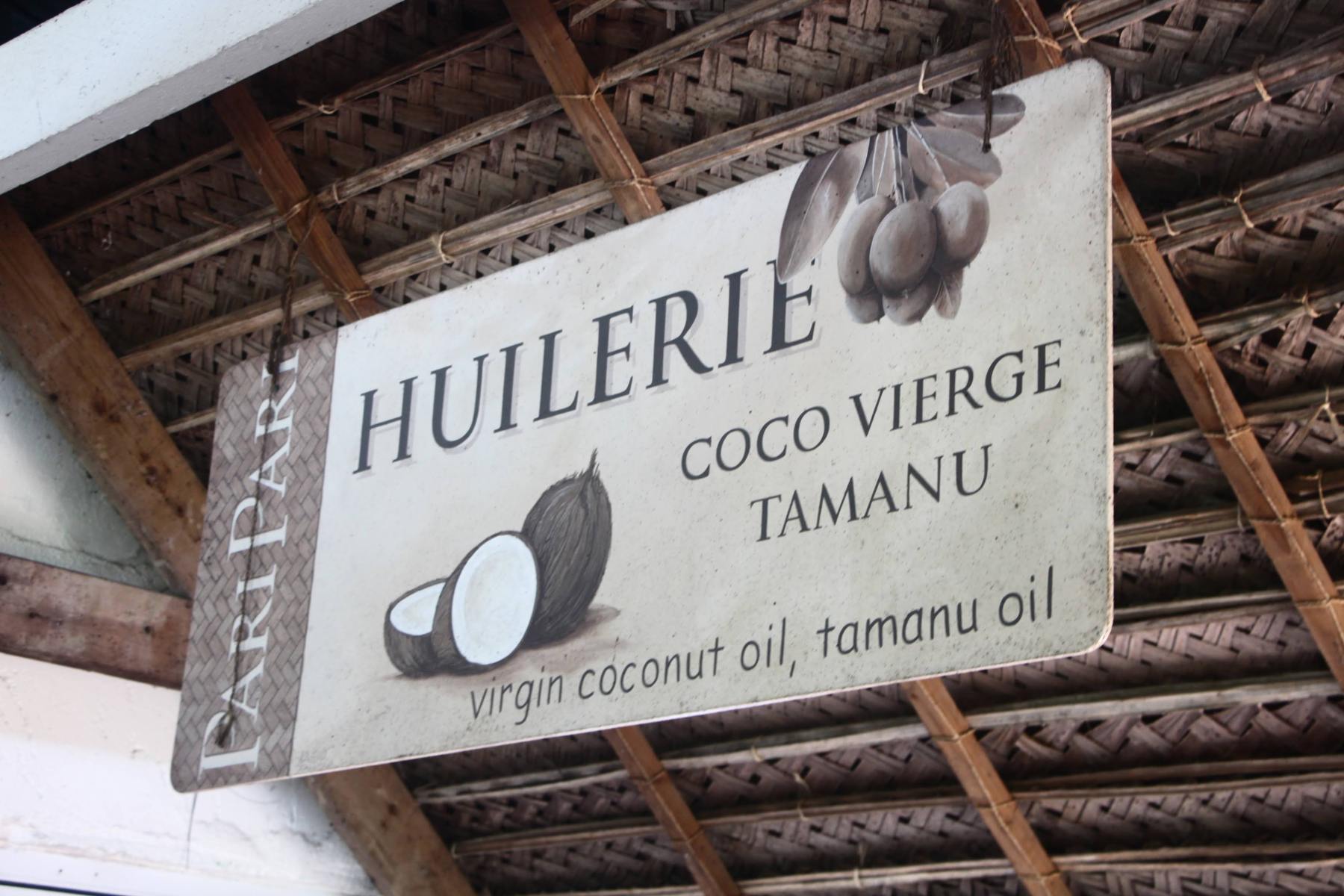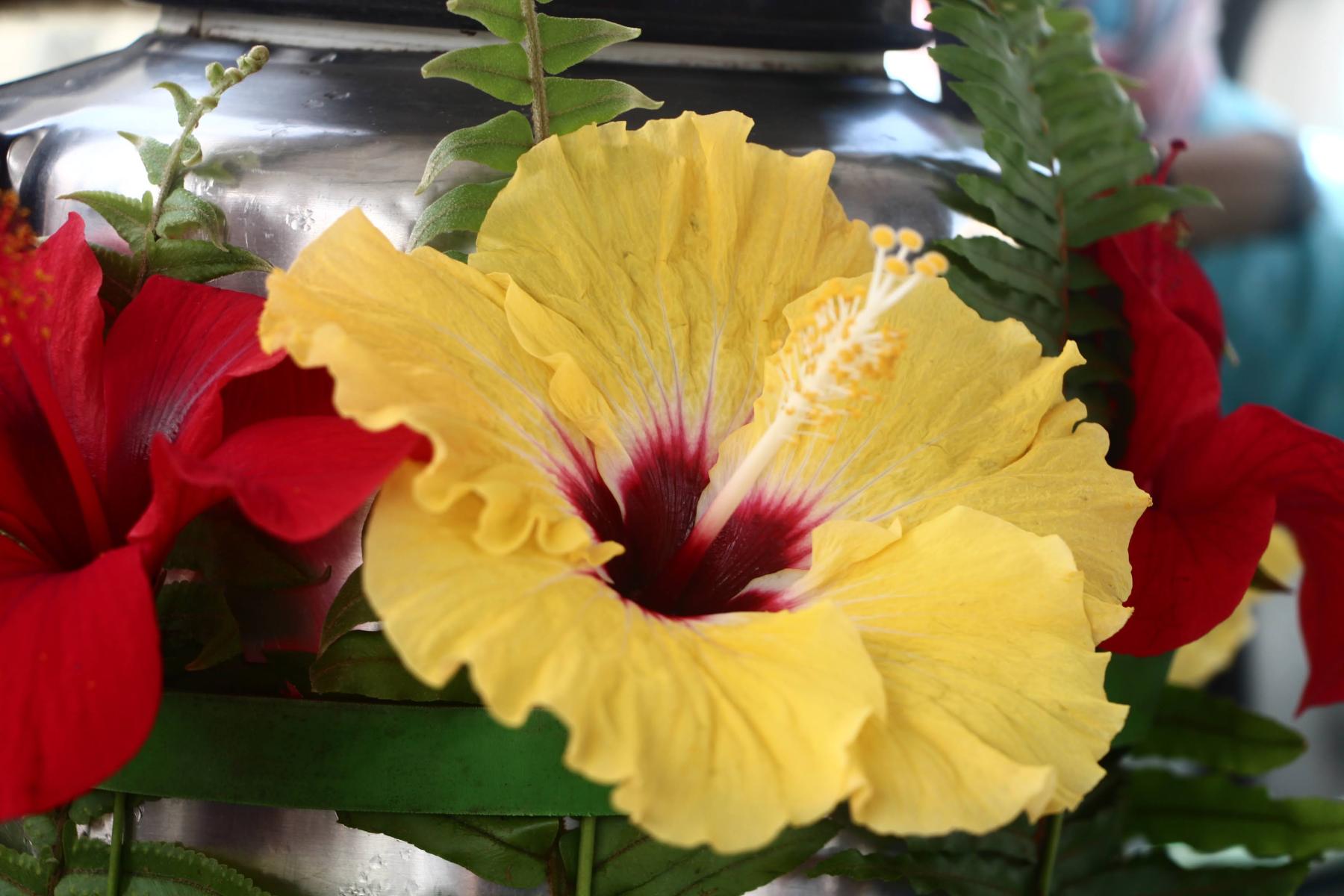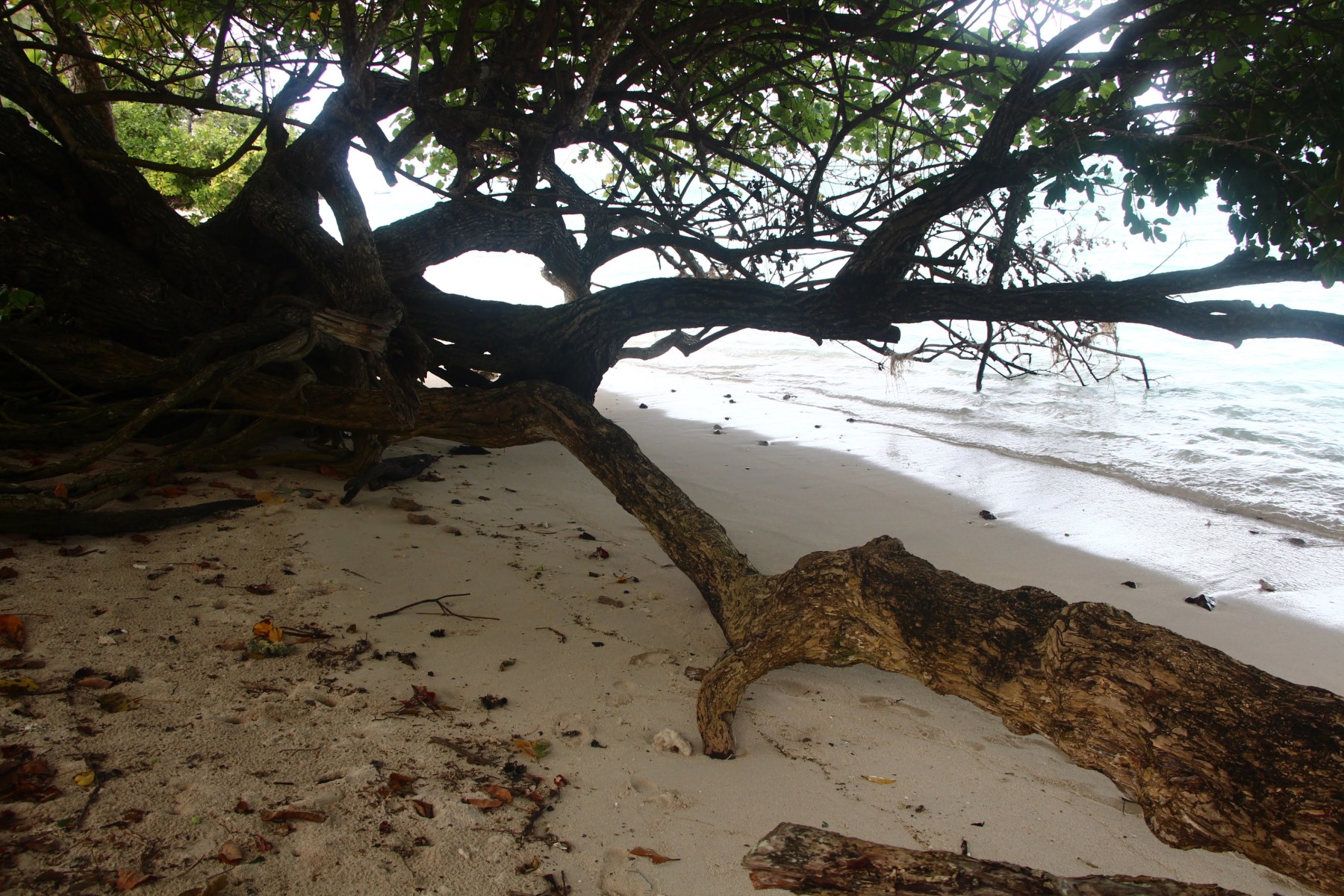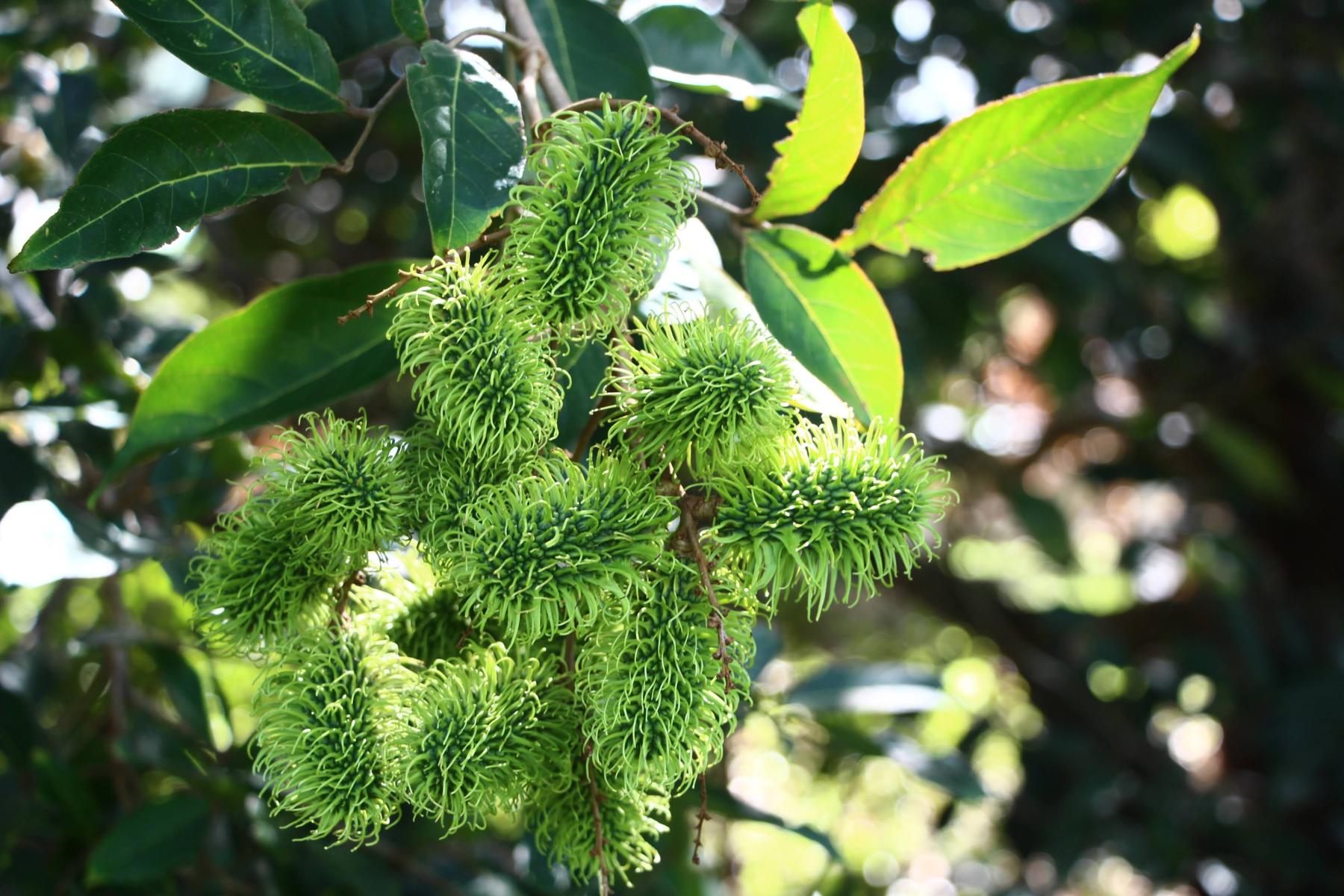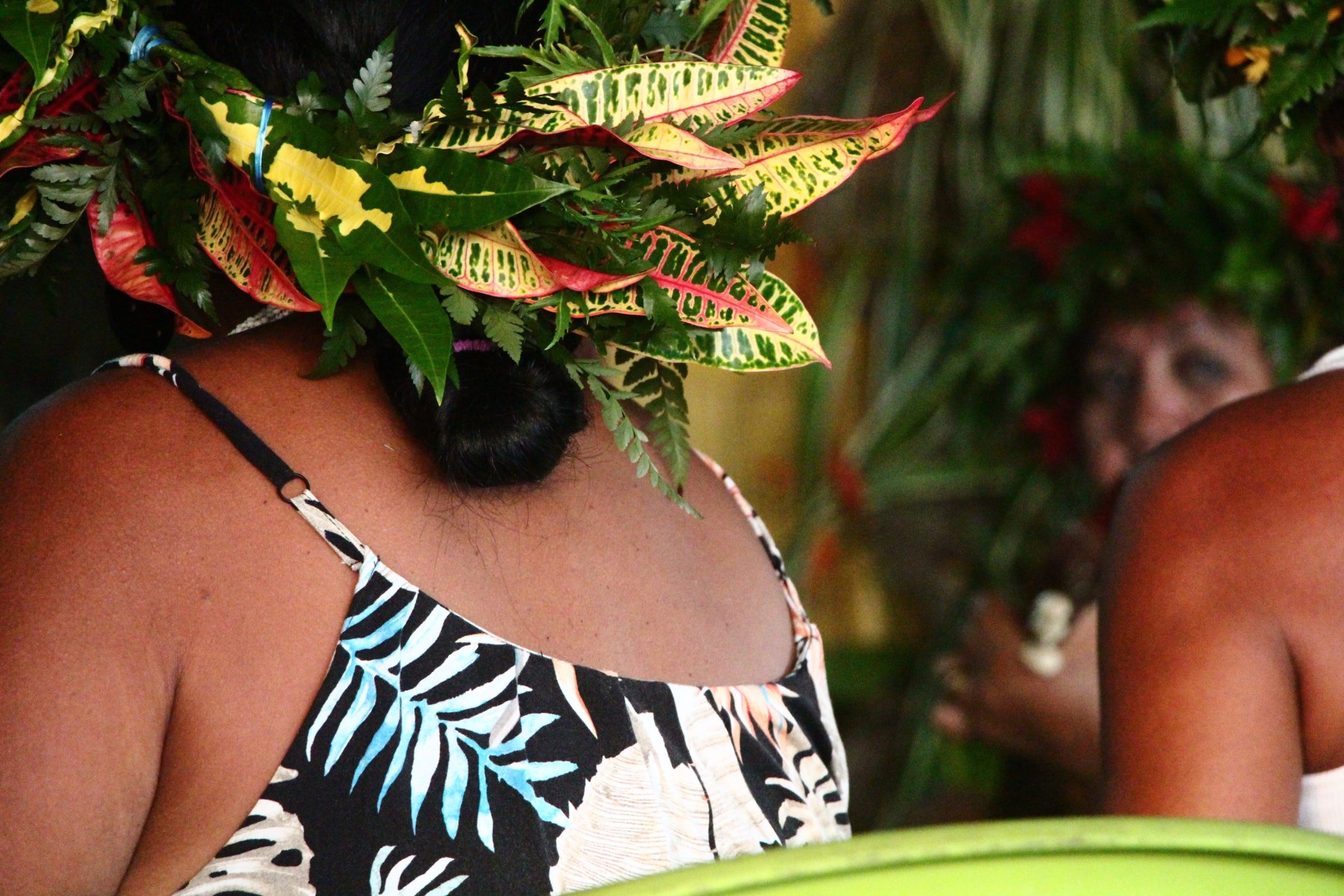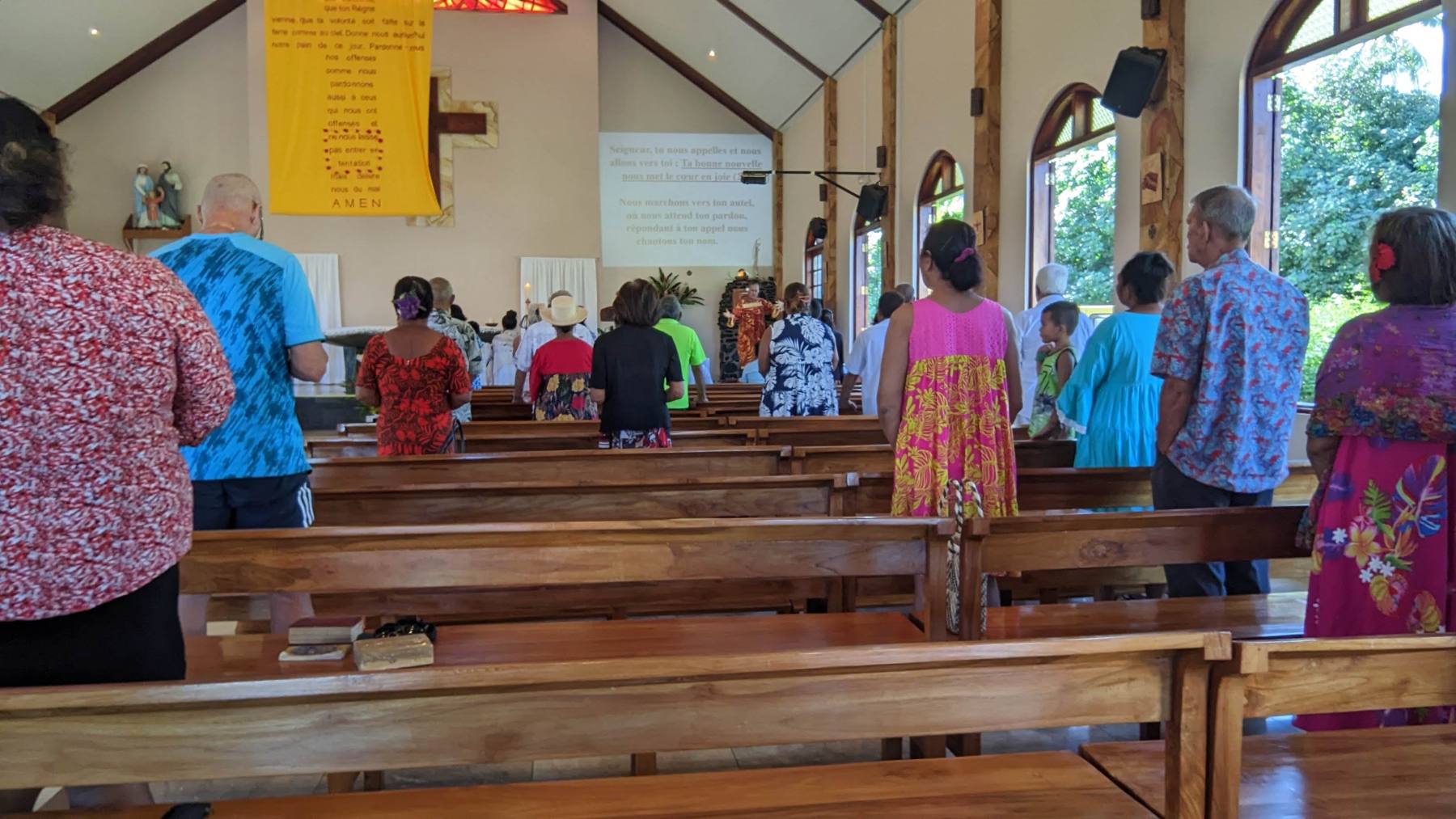After 4 days moving around within the lagoon at Bora Bora, we headed out the only pass to the ocean and found those predictable trade winds right where they were supposed to be and coming from just where we needed to go. Behind the wheel of our catamaran, Leslie and Val decided to raise the sails and sail back upwind. We were able to get a reasonable boat speed, in the range of 6-8 kts, but our direction alternated between New Zealand and Mexico City, neither of which is anywhere near in line with our goal. After an ineffective hour, we turned on the motor and took down the sails. Some 4 hours later we anchored in a lovely, jungle-like bay on the island of Taha’a.


Chris found a fellow, Noé, on Taha’a who gives “Vanilla Tours” and seven of us set off on a whirlwind tour of the periphery of this island. Our first stop was in a search for a vanilla blossom, but blossoms are out of season right now. We climbed a muddy and slippery path through dense plants and came to a group of twisty vanilla vines. Noé had searched out a blossom the previous day and he demonstrated how each blossom needs to be pollinated by hand, as the moth that does this in Mexico where vanilla plants were first cultivated does not live in these islands. Noé told us that his father, who started this vanilla operation, would hand-pollinate 3000 blossoms!
Our “Vanilla Tour” showed us how people live here. At times Noé would stop the car and point out a beautiful overview, or hop out, climb a bit into the vegetation, and come back with unfamiliar plants or fruits. One such fruit was tamanu, which is important here as medicine or as food.
So ends the sailing portion of our trip. We straighten up the boat and all these Friday Harbor cruisers depart in different directions. Our next voyage is short: a 30 minute flight from Raiatea to the island of Huahine.
Part 2: Happy in Huahine – a calm cultural experience with abundant natural beauty
Memories come flooding back: Leslie’s grandmother’s lush back yard in Sebring, Florida; a glorious hike along the northern Na Pali Coast of Kauai in Hawaii; camping in humid Taman Negara National Park in Malaysia in a true tropical rain forest…. Lush vegetation prevails on the island of Huahine. Actually, there are two islands (Huahine Nui and Huahini Iti, connected by a charming white bridge) where we spent our second week in French Polynesia. We chose this island because of a sailing friend’s recommendation for getting off the beaten track in French Polynesia. Our goals were to experience Polynesian culture, visit some archaeological sites, and generally kick back and relax. With no reservations for accommodation or car rental and with our Lonely Planet Guide to Tahiti and French Polynesia in hand, off we went. This was the exact opposite of our planned first week, and one of us was more than a little apprehensive as we landed at the small airport in Fare, the main town of Huahine, with no one to pick us up and no specific lodging in sight.


With some calling and numerous queries, we found James and his small rental car agency. Now we had a car. We drove to the south end where our guidebook suggested a place but it was full and the owner suggested a nearby very fancy resort, the Mahana, for our first night. They had an opening for one night in a bungalow with a traditional thatched roof with spacious room and huge bathroom with a filtered view to the sea and a beautiful white sand beach. We had a lovely beach walk while photographing the varied scenes – everything from sleepy terns resting on the dock railing to crumbling structures gradually returning to the land to classic tropical lodging with ideal snorkeling right off shore. We decided to check out a nearby family-run restaurant instead of eating dinner at the Mahana, and were rewarded with a delicately grilled “lagoon fish” or catch-of-the day. Dinner was suddenly interrupted by a powerful windstorm which nearly blew over the tent under which we were sitting. Family members rushed us geriatric types to a more protected area and we watched as they then dismantled the tent in short order. Twenty minutes later all was calm and we finished our fish with salad and wine at a leisurely pace.
Finding an affordable place to stay for the remainder of the week proved more challenging than expected, but eventually Manaha and her brother-in-law, Raphael, came to our rescue. They offered us a house with verdant yard full of tropical fruit trees and flowering bushes in a rich profusion of color at Villas Bougainville. This sister/brother-in-law team had wonderful local recommendations for where to eat authentic Tahitian food and where to snorkel, whom to contact for an archaeology tour, and how to relax, sit and just visit. No schedule and hardly any set routine…. – just what we needed after our busy social and stimulating first week in French Polynesia!
We soon established a bit of a routine: sleep in until rested; have coffee and then head to the main village on Huahine Nui (Big Huahine) of Fare to check out the local scene; have a leisurely lunch on the waterfront while watching the calm activity; drive around part of the island perimeter and check out a recommended spot or two; end up at our rented house on the southeastern side of Big Huahini for a light supper; then read until sleepy. (Leslie is reading Gauguin’s Journal about his 2 years of living in Tahiti, Noa Noa, with numerous illustrative paintings, while Val is reading The Last Palace by Norman Eisen on his Kindle.) We soon discover that Huaine Nui is much busier than laid-back Huahini Iti. Although we explore the perimeter road of each island, the southern island appeals more to us as it has a less touristy atmosphere. There are only a few restaurants and the beaches are remarkably beautiful and unspoiled. But, as you will see from the places we visited, there is much more action on Huahine Nui, and we had more unique encounters on the northern island.
We contacted a local, an American archaeologist, to set up an archaeological tour. That day, our plan changed when our enthusiastic and informed tri-lingual guide, Muriel, came with two French couples and we six took something more like an ‘island tour’. We did visit two archaeological sites. The one near the village of Maeva is quite extensive along the shore and goes up the adjacent plant-filled hills. It also has a small museum.
We also observed a number of large fish traps that have been used for centuries and looked at some HUGE blue-eye and blue-mouth eels that spend part of their lives in a little creek near the lagoon. Muriel said that some of the island children come regularly after school to “play” with the eels. She reports that they are gentle and are considered sacred by the islanders.

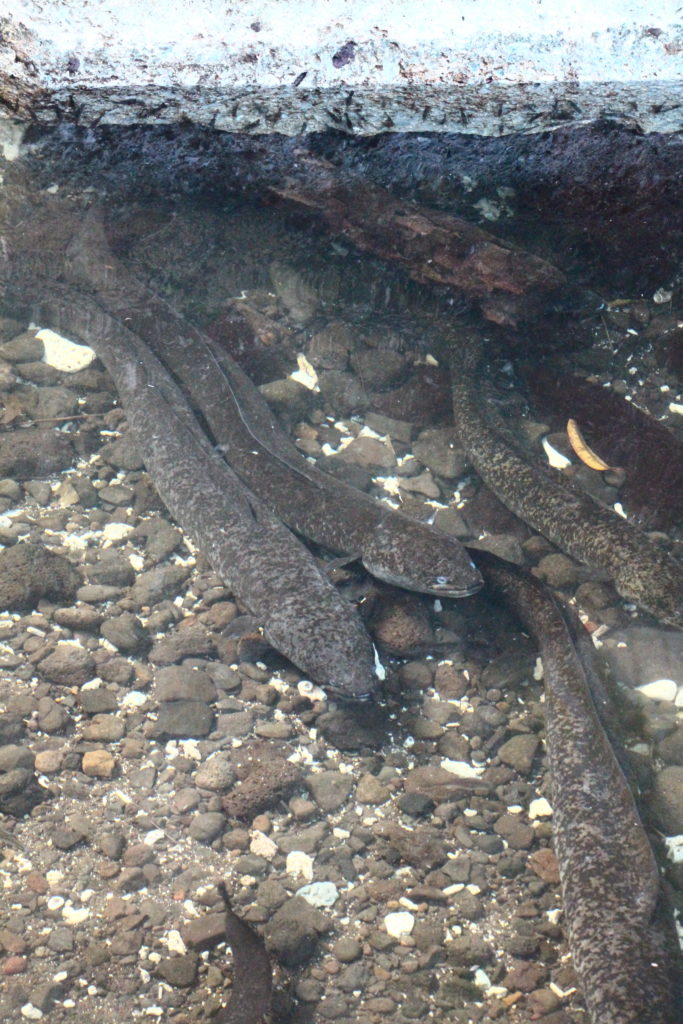

We eventually ended up in the same remote area of this island on our last night when our supper rations were running low and we decided to check out the only other modest restaurant we had seen on our first night. It turns out that there was no food, but lots of drink and spirited playing of native string instruments accompanied by lots of enthusiastic singing. This group evidently meets regularly on Sunday nights to play traditional Polynesian music. Another happy surprise on Huahine Iti!
The following photos show some more joyful experiences we had on Huahine Nui. Several people and our guidebook recommended snorkeling at the Coral Garden, but when we arrived and entered the water, we discovered a really fast current. We gradually worked our way down the shoreline, and the current lessened but the snorkeling was rather disappointing. We were returning to the car when we discovered the most unusual ruins of the Sofitel Hotel, a French luxury resort that was abandoned more than a decade ago. A most unique site which was totally unexpected as we wandered and wondered…..



At an art gallery in Fare we discover the work of Melanie Dupre, and the friendly owner of the shop recommends that we stop by Melanie’s studio to see more of her vibrant paintings of French Polynesia. We head down a remote road on Motu Ovarei to a secluded property and find Gallery Umatatea. We learn that Melanie is back in the US (preparing for a permanent move to Huahini Nui) from a French painter friend of Melanie’s who is keeping shop while painting in the studio while Melanie is away. Leslie had a lovely chat with the charming French artist (who shared her email address and which can now unfortunately not be found….) We admired many of exotic paintings and prints before departing this most unusual artists’ studio built in traditional Polynesian style.
Motu Tresor is our last stop before we return the car to James and he drives us to the airport. This shell museum is a rare find, and its proprietor is just as unusual. The enthusiastic owner of a stunning collection of over 10,000 shells (most from Polynesia) was eager to share his knowledge about the history and behavior of various shell species. The collection is the work of one man, Franck Dauphin, who has been collecting shells for over 40 years. We learned that cone shells, which we knew were highly toxic, come in many, many varieties. The key to knowing whether a shell is a cone shell is whether the opening of the shell is continuous from one end to the other. If one is so unfortunate as to come in contact with the venom of some species, he/she supposedly has 2 hours to live. There are no remedies or treatments available in this case, but some species’ bites are relatively minor and similar to a bee sting.
On loan to Leslie was a beautifully-woven French Polynesian hat, specifically lent to Leslie by our sailor friend, Barbara, to wear to church on a Sunday when we were on Huahine. Needless to say, Leslie was not going to pack it in her already stuffed suitcase and permanently damage it, but we did attend the Catholic service at in Fare. Leslie wore her usual aqua sunhat and both she and Val were amazed by the beautiful singing in the service. Words of the hymnal were projected on a large modern screen, and a traditional band accompanied the singing of the hymns while Val unobtrusively took some photos of participants.
Thanks go to Barbara for her many good recommendations of things to do while visiting this memorable island of two contrasting parts.














